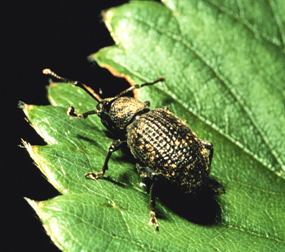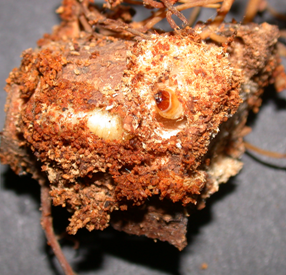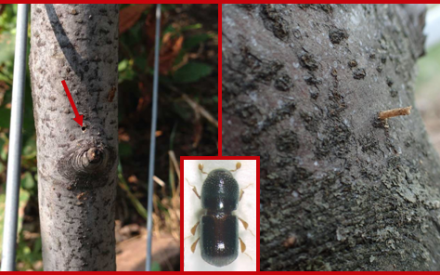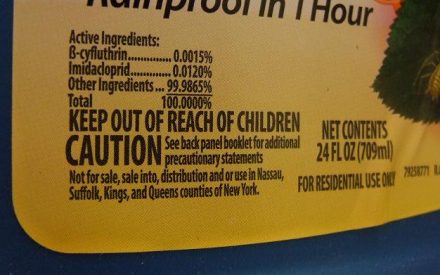
R. Chris Williamson, UW-Extension Turf and Ornamental Specialist
Revised: 8/13/2012
Item number: XHT1065
The black vine weevil was first detected in Connecticut in 1910, and was reported to have been accidentally imported from Europe through the movement of ornamental plants. Subsequently, it has spread across the northern U.S., including Wisconsin. There is a closely related species to the black vine weevil called the strawberry root weevil. Both weevils are collectively referred to as root weevils because the larvae of both species feed on plant roots.
Plants Attacked and Damage: The black vine weevil feeds on ornamental plants both as an adult and as an immature (i.e., larva). Adult black vine weevils feed on over 100 identified species of woody and herbaceous plants. However, preferred hosts are yew (Taxus), hemlock (Tsuga), and various rhododendrons (Rhododendron). Because yew appears to be the most susceptible host, black vine weevil is often referred to as the taxus weevil. The black vine weevil commonly infests containerized perennials in nursery, greenhouse, and poly-house production settings. Black vine weevil adults are nocturnal (i.e., they are active at night), thus monitoring for adults should be conducted at night. The adult weevils feed along the margins of leaves resulting in crescent-shaped notches. Light to moderate notching typically has little effect on plant health. Black vine weevils cannot fly, but they are very active walkers. The primary means of dissemination of this insect to new areas is through potted plants or soil root ball transplants. Black vine weevil larvae (i.e., grubs) are legless and approximately 3∕8 inch in length. If soil conditions become excessively moist or young roots become scarce, larvae will often move to larger roots near the base of the plant.
Life Cycle: Female black vine weevil adults emerge from the soil in late-May to early-June. The adult weevils feed on plant material for approximately 21-42 days before laying eggs. Females lay several eggs every day on nearby suitable host plants. Because black vine weevil adults are nocturnal, they hide during the day in proximity of the base of plants, or in mulch and leaf litter near host plants. Eggs hatch in two to three weeks, and the small, legless C-shaped larvae begin feeding on young roots. As the larvae grow and develop over the summer, they attain a size of approximately 5∕8 inch. Mature larvae next enter an overwintering stage where they prepare for pupation the following spring. There is only one generation per year.
Control: Because of their nocturnal behavior and subterranean habits, black vine weevils can be difficult to control. After adults emerge, spring applications of insecticides are recommended in order to control adults before eggs are laid. However, due to the prolonged period of adult activity, several spray applications may be needed. Late afternoon or early evening treatments increase control while minimizing potential exposure to humans, as well as other non-target insects. Larval control is much more difficult. Many control products are often bound up in organic matter under plants and never reach the larvae. However, soil injection applications have been demonstrated to provide effective control.
For more information on black vine weevil: Contact your county Extension agent.
Additional Images
Download Article






 Pine Root Collar Weevil
Pine Root Collar Weevil Ips Bark Beetle
Ips Bark Beetle Black Stem Borer
Black Stem Borer Home Landscape Insecticides
Home Landscape Insecticides


